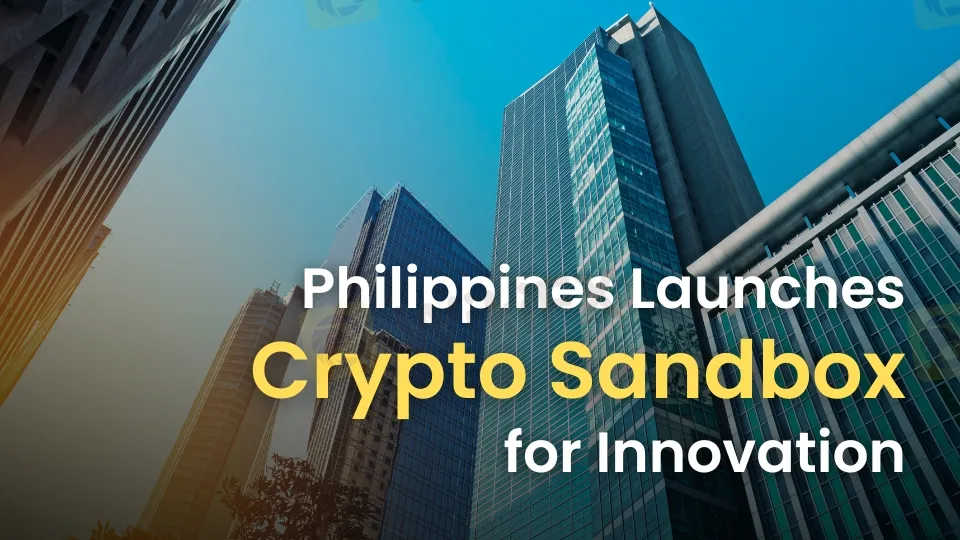简体中文
繁體中文
English
Pусский
日本語
ภาษาไทย
Tiếng Việt
Bahasa Indonesia
Español
हिन्दी
Filippiiniläinen
Français
Deutsch
Português
Türkçe
한국어
العربية
Philippines Launches Crypto Regulatory Sandbox to Foster Innovation
Abstract:The Philippines introduces a crypto regulatory sandbox to support digital asset innovation, focusing on security, consumer protection, and financial inclusion.

The Philippines has kicked off a new regulatory sandbox just for crypto service providers, taking a big step to manage the rising digital asset world. Led by the Bangko Sentral ng Pilipinas (BSP) and the Department of Information and Communications Technology (DICT), this plan mixes safety with fresh ideas in the fast-growing cryptocurrency scene.
What Is a Regulatory Sandbox?
A regulatory sandbox lets fintech and blockchain companies try out new products, services, or ways of doing business in a safe, watched space. It gives them the freedom to test things without all the usual rules hitting them right away. This setup helps officials see the good and bad sides of new tech, while businesses can tweak their creations with guidance.
The sandbox puts extra focus on things like stopping money laundering and keeping customers safe. Its a spot where crypto companies can work with Philippine officials to make sure their offerings follow local and world rules.

Why Is the Sandbox Important for the Philippines?
The Philippines has a lot of young, tech-smart people who want quick and cheap digital money services. Many overseas Filipino workers (OFWs) depend on sending cash home, so safe digital tools are a must. This crypto sandbox gives companies a clear way to test ideas, helping grow fair financial options.
Plus, it keeps an eye on things early, cutting down on fraud and scams that have hit shady crypto setups. It shows the Philippines is open to cryptocurrencies, but only if theyre handled carefully and properly.
Key Characteristics and Eligibility
The BSP and DICT set some rules to join the sandbox. Companies need to offer a digital asset product or service that helps people or the money system. They also have to show they can handle risks and agree to regular check-ins, sharing how things are going and what users think.
The sandbox works in steps: applying, getting approved, testing, and then joining the bigger market if it goes well. This could really shake up the crypto scene here.
Reactions from the Industry and Future Outlook
People in the industry like this sandbox idea and say its a smart move. Some local and global blockchain companies are already eager to jump in. Experts think it might make the Philippines a top spot for crypto ideas in the region, like Singapore and Hong Kong with their own sandboxes.
But some worry it could let weak projects sneak through if not watched closely. Keeping trust will mean being open, checking things well, and talking to everyone involved.
The Philippines crypto sandbox is a game-changer for its money world. By pushing new ideas while keeping people safe, it could lead the way in crypto done right. If it works, this could connect a free future with steady rules.

Disclaimer:
The views in this article only represent the author's personal views, and do not constitute investment advice on this platform. This platform does not guarantee the accuracy, completeness and timeliness of the information in the article, and will not be liable for any loss caused by the use of or reliance on the information in the article.
Read more

Tighter Scrutiny: Finfluencers Face Global Crackdown Amid Rising Risks
The UK’s Financial Conduct Authority (FCA), in collaboration with eight global regulators, has taken strong enforcement actions against unauthorised finfluencers. The move signals a broader regulatory shift toward stricter oversight of financial promotions on social media.

Interactive Brokers Enhance Account Security with FDIC Coverage
Interactive Brokers now offers up to $5M FDIC insurance for individual accounts, boosting protection on cash held in brokerage accounts starting May 2025.

Vantage Markets Review 2025: Trusted Forex and CFD Trading Since 2009
Explore our 2025 Vantage Markets review! A trusted Sydney-based broker since 2009, offering forex, CFDs, low spreads, global regulation, and 24/7 support. Trade from $50!

IronFX vs Exness Review 2025: Comprehensive Broker Comparison
Explore an in-depth comparison between IronFX and Exness. Compare licensing, features, regulation, trading platforms, and customer service for smarter trading decisions.
WikiFX Broker
Latest News
IronFX Broker Review 2025: A Comprehensive Analysis of Trustworthiness and Performance
OctaFX Flagged by Malaysian Authorities
Nonfarm Data Lifts Market Sentiment, U.S. Stocks Rebound Strongly
Interactive Brokers Enhances PortfolioAnalyst with New Features
ATFX Opens New Office in Cape Town's Portside Tower to Expand in Africa
Review & Win! Thousands in Rewards Being Distributed Now!
Why Your Worst Enemy in Trading Might Be You
Errante Broker Review
SFC Issues Restriction Notice to GA (Int’l) Capital Management Limited Over Regulatory Concerns
Currency Hedging Practices and How They Protect Traders' Interests
Currency Calculator


